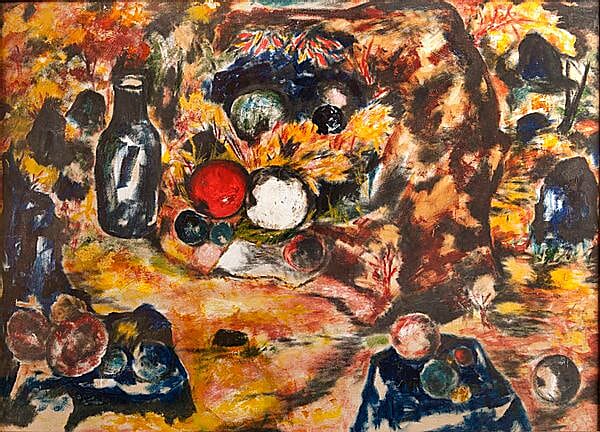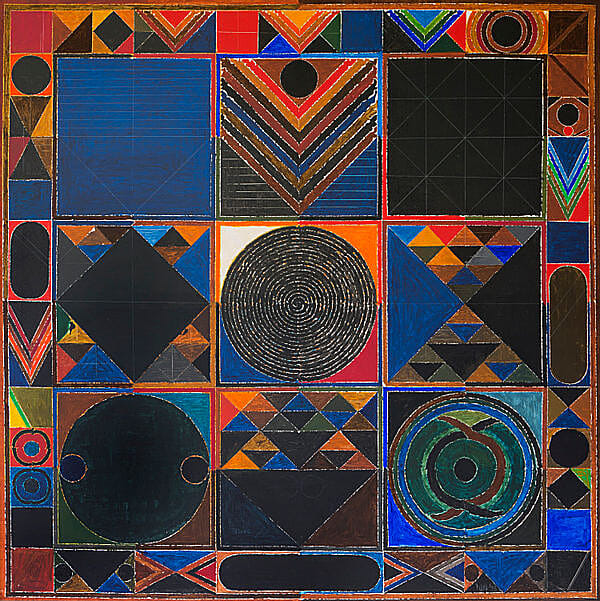Blogs
The Coming of Age of Indian Modern Art
Khushi Bansal
A glimpse into the world of the Progressive Artists’ Group that revolutionised Indian Modern art.
When I studied art history at university, post World War II art was dominated by the works of great artists such as Pablo Picasso, Jackson Pollock and Marcel Duchamp. Art was confined to the boundaries of western countries such as the United States, France, Italy and other European nations. With time, however, I found my interest shifted towards India and the art produced within the country during a time of crisis, specifically post-independence.
In 1947, India transitioned from being a British colony to a republic, with our nation having survived a partition. People had lived through an unimaginable trauma, having experienced displacement, isolation, death and a loss of identity. So in 1947, Indian modern artists F. N. Souza, S. H. Raza, M. F. Husain, K. H. Ara, H. A. Gade, and S. K. Bakre established the Progressive Artists’ Group (PAG) in Bombay (present-day Mumbai) to forge an identity in art for a newly free nation. The name was inspired by the Progressive Writers’ Movement that was formed in the 1930s.
The group came together when Raza, Souza, Bakre (the only sculptor) and Ara decided to collaborate on an exhibition together. Soon after this meeting, Souza persuaded Husain, and Raza convinced Gade to participate in the creative movement. PAG intended to promote a strong opinion against imperialism by rejecting the traditional academic styles and instead worked on integrating Indian themes and imagery with western artistic techniques such as Modernism, Post-Impressionism, Cubism and Expressionism. While each of these artists had a common objective, they adopted entirely different approaches and styles.

Still Life on Grass by K.H. Ara, Oil on paper, MAC.01046
Ara was known for creating striking watercolour and gouache paintings and incorporating many folk and native art styles, while Souza focused on highlighting distortion and forms by merging Indian traditional art with the western styles. Gade, who had a keen interest in painting landscapes, was considered to be one of the first abstract painters in a post-independent India. The only sculptor in the group was Bakre and his works were distinctively expressionist. In fact, he became famous for introducing independent imagery to India.

Krishna and Balaram by M.F. Husain, Oil on canvas, MAC.00819
Let us now go on to discuss Husain and Raza, perhaps the most recognised members of PAG today. Raza, a proficient watercolourist was best known for bringing fluidity into his work. Over the course of his life, he transitioned from lyrical, Expressionist landscapes to more abstract, geometric forms. Husain, on the other hand, created paintings that combined aspects of folk art, tribal art, mythology and one of the most authentic flavours of Cubism. He ended up being quite controversial within the Indian socio-cultural context and so he self-imposed an exile in 2006.

Universe by S.H. Raza, c. 1993, Acrylic on canvas, MAC.00468
All six of the artists came from varied backgrounds in terms of region, caste and faith. Their walks along Marine Drive in Bombay and dinners at the Chetana restaurant helped them realise that at the end of the day, each of them had a common objective: art that embodied the potential of a secular India, with one eye on local matters and the other on global affairs. Around 1950, the group went through a transition with core members like Souza and Raza leaving; at the same time, new members like Vasudeo S. Gaitonde, Prafulla Dahanukar, Krishen Khanna and Mohan Samant were initiated into the group.
Even though each artist had their own distinct style, philosophy and beliefs, what united them was their shared understanding that the dominant mode of creating art that focused on an orientalist and nostalgic approach to nationalism was redundant and no longer valid. To fix this, they focused on the rich socio-cultural traditions central to the identity of India by revisiting the past for inspiration. This new form was more inclusive and accepting, which aligned with the key ideas of secularism. Further, these artists looked into different styles of Asian painting, including Korean landscapes and Japanese ink painting.

FN Souza with Raza and Padamsee in Paris in 1952, Image credit: Wikicommons Media
So many conflicts have become the identifying legacy of the Progressive Artists’ Group. The group started crumbling with Souza’s departure to London in 1949 and Raza leaving for Paris. Soon after, Bakre moved to London as well, leaving behind a group of exceedingly committed, talented artists. However, over time, they too started moving towards their own specialised practices, which ultimately led to the group disbanding in 1954. They left behind a sense of development that included fresher perspectives, subject matters and aesthetics. Today, this group of artists form the backbone of what is known as Indian Modern Art.
A recent graduate from Central Saint Martins, London, Khushi Bansal is an aspiring curator with a keen interest in baking a perfect loaf of bread.








